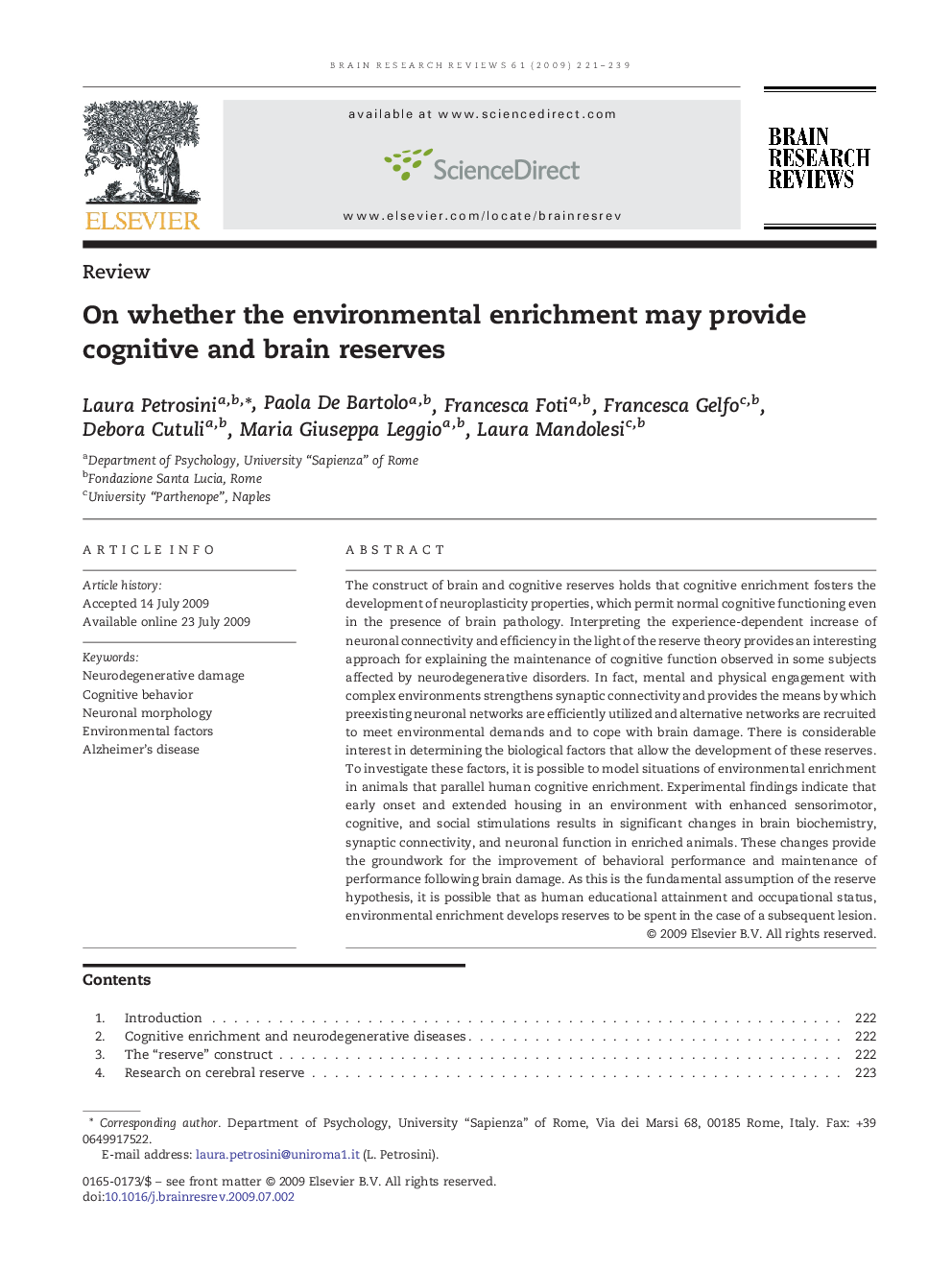| Article ID | Journal | Published Year | Pages | File Type |
|---|---|---|---|---|
| 4333740 | Brain Research Reviews | 2009 | 19 Pages |
The construct of brain and cognitive reserves holds that cognitive enrichment fosters the development of neuroplasticity properties, which permit normal cognitive functioning even in the presence of brain pathology. Interpreting the experience-dependent increase of neuronal connectivity and efficiency in the light of the reserve theory provides an interesting approach for explaining the maintenance of cognitive function observed in some subjects affected by neurodegenerative disorders. In fact, mental and physical engagement with complex environments strengthens synaptic connectivity and provides the means by which preexisting neuronal networks are efficiently utilized and alternative networks are recruited to meet environmental demands and to cope with brain damage. There is considerable interest in determining the biological factors that allow the development of these reserves. To investigate these factors, it is possible to model situations of environmental enrichment in animals that parallel human cognitive enrichment. Experimental findings indicate that early onset and extended housing in an environment with enhanced sensorimotor, cognitive, and social stimulations results in significant changes in brain biochemistry, synaptic connectivity, and neuronal function in enriched animals. These changes provide the groundwork for the improvement of behavioral performance and maintenance of performance following brain damage. As this is the fundamental assumption of the reserve hypothesis, it is possible that as human educational attainment and occupational status, environmental enrichment develops reserves to be spent in the case of a subsequent lesion.
